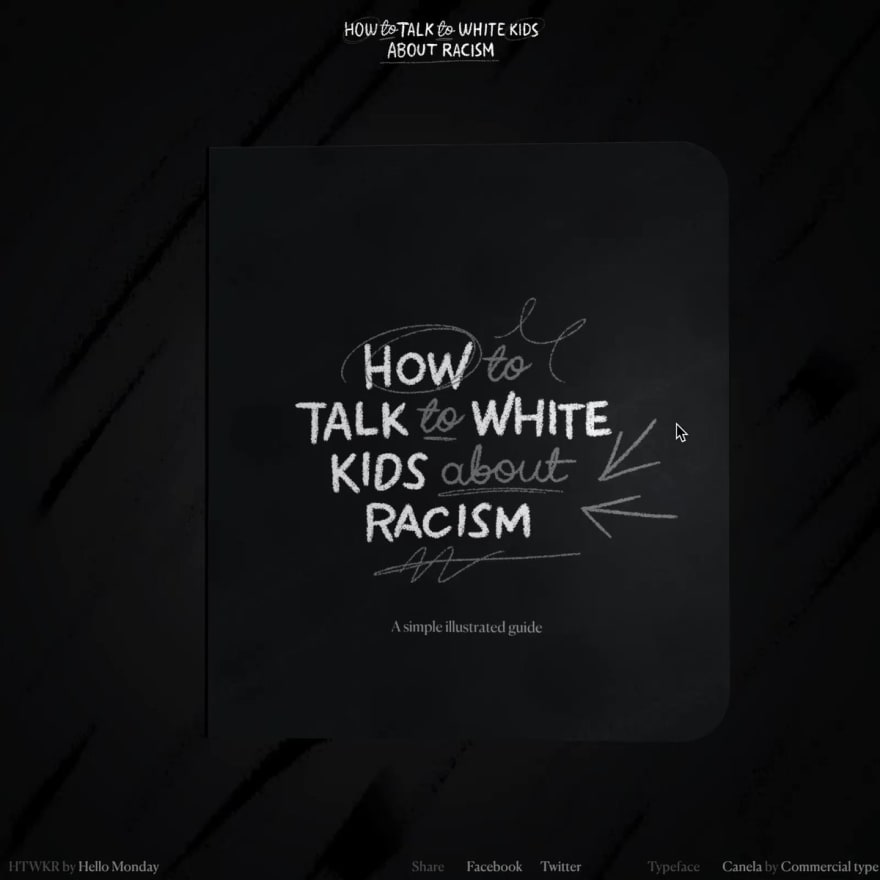Welcome to my Weekly Digest #32 of this year.
This weekly digest contains a lot of interesting and inspiring articles, videos, tweets, podcasts, and designs I consumed during this week.
Interesting articles to read
How Our Organization Improved Web Accessibility (Case Study)
In this article, Catherine Houle and Ilknur Eren share how their organization “Understood” removes barriers for people who learn and think differently by combining accessibility and usability in their processes.
How Our Organization Improved Web Accessibility (Case Study) - Smashing Magazine
The Study of Shaders with React Three Fiber
A complete guide on how to use shaders with React Three Fiber, work with uniforms and varyings, and build dynamic, interactive and composable materials with them through 8 unique 3D scenes.
The Study of Shaders with React Three Fiber - Maxime Heckel's Blog
Some great videos I watched this week
Unicode, in friendly terms: ASCII, UTF-8, code points, character encodings, and more
Ever been bit by a Unicode bug? Maybe you weren't treating UTF-8 encoded data correctly, or tried to read it as ASCII? Maybe you mixed up UTF-8 vs UTF-16? Unicode and character encoding might seem like a tricky topic, but let's break them down and learn about them piece by piece, from ASCII to code points to graphemes to combining character modifiers and more.
by Alex
How to inspect animations
You can use the Animations tab in DevTools to inspect, scrub and modify animations.
Creative CSS Layout
CSS layout has moved along in leaps and bounds in the past few years. Beyond flexbox and Grid, there is aspect-ratio, min, max and clamp functions, custom properties, and logical properties, all of which can help us solve common layout challenges.
Hugo in 100 Seconds
Hugo is an extremely fast static site generator for building websites with markdown. It is written in the Go programming language and provides a large collection of content management tools for developers.
by Fireship
Useful GitHub repositories
Lyra
Fast, in-memory, typo-tolerant, full-text search engine written in TypeScript.
Try the live demo
Installation
You can install Lyra using npm, yarn, pnpm:
npm i @nearform/lyra
yarn add @nearform/lyra
pnpm add @nearform/lyra
Usage
Lyra is quite simple to use. The first thing to do is to create a new database instance and set an indexing schema:
import { create, insert, search, remove } from '@nearform/lyra';
const db = create({
schema: {
author: 'string',
quote: 'string'
}
});
Lyra will only index string properties, but will allow you to set and store additional data if needed.
Once the db instance is created, you can start adding some documents:
insert(db, {
quote: 'It is during our darkest moments that we must focus to see the light.',
author: 'Aristotle'
});
insert(db, {
quote: 'If you really…Fluent Emoji
Fluent Emoji are a collection of familiar, friendly, and modern emoji from Microsoft.
Fluent Emoji
Fluent Emoji are a collection of familiar, friendly, and modern emoji from Microsoft.
Contact
Please feel free to open a GitHub issue and assign to the following points of contact with questions or requests.
- Jason Custer(@jasoncuster) / Spencer Nelson(@spencer-nelson) - Design
Code of Conduct
This project has adopted the Microsoft Open Source Code of Conduct. For more information see the Code of Conduct FAQ or contact opencode@microsoft.com with any additional questions or comments.
dribbble shots
Birdies: Dream Team
CosyPOS – restaurant POS system
Niafty - NFT mobile app
by Azhar Dwi
Tweets


 Daniel Velasquez@anemolito
Daniel Velasquez@anemolito This is one of my favorite executions of motion in Webgl by @hellomondaycom
This is one of my favorite executions of motion in Webgl by @hellomondaycom
Not only it's satifying to flip pages, but it supports and guides you through a powerful message!
See it here: howtotalktowhitekidsaboutracism.com14:12 PM - 08 Aug 2022
Picked Pens
Sparkly Shiny Text
by Jhey
CSS Portal Ring
by Jhey
Thank you for reading, talk to you next week, and stay safe! 👋






](https://res.cloudinary.com/practicaldev/image/fetch/s--4NsOOM1C--/c_limit%2Cf_auto%2Cfl_progressive%2Cq_auto%2Cw_880/https://cdn.dribbble.com/userupload/3256838/file/original-aa38766dcf7a0788aa01b527578d7fa6.png)
](https://res.cloudinary.com/practicaldev/image/fetch/s--ZUUGxe3P--/c_limit%2Cf_auto%2Cfl_progressive%2Cq_auto%2Cw_880/https://cdn.dribbble.com/userupload/3261378/file/still-257de2f1d3d1b2abe102e2c9b0cd1b41.png)
](https://res.cloudinary.com/practicaldev/image/fetch/s--KWSS6JH6--/c_limit%2Cf_auto%2Cfl_progressive%2Cq_auto%2Cw_880/https://cdn.dribbble.com/users/6013606/screenshots/19055182/media/affc7beee5550f6ff27e7f034cea229e.png)






Top comments (0)